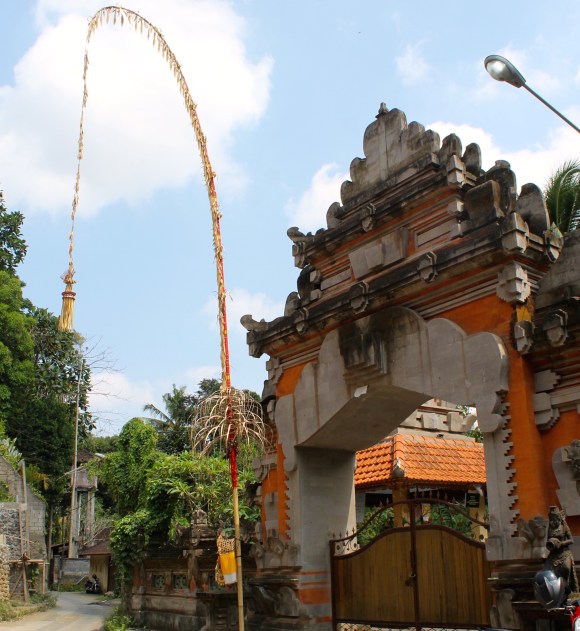
Penjor were pretty much the first thing I noticed about Bali. As soon as we left the airport, they began towering over our car from both sides of the street: long-necked, graceful swoops of bamboo arching and bobbing over the road, their strips of paper and coconut leaves fluttering in the air.
But what were these charming decorations? What was their significance? That took a little longer to find out. And to be honest, I’m still not sure I know.
Let’s start with the basics. Penjor are part of the Balinese Hindu holiday called Galungan. It’s perhaps the most important cultural holiday of the year for Balinese and is said to celebrate the triumph of good (dharma) over evil (adharma). According to various people I asked, the festival also celebrates prosperity and the bounty of the earth. The traditional Balinese calendar has 210 days, so the festival falls at a different time each Gregorian year.
The penjor are constructed in the days leading up to the festival and posted along the street in front of homes and other buildings. There is a vast variety in design, with more intricate designs being a sign of wealth, but there are some elements common to each. The poles, which are usually around eight to 10 meters (26 to 33 feet) long, are made of bamboo and decorated with coconut leaves and a large ornament on the tip that bends it down. They are also supposed to be decorated with root vegetables, grains, fruits, traditional Balinese cakes, and 11 special coins.
During Galungan, the ancestral spirits are supposed to return to homes, so the penjor are also equipped with a small triangular box on the pole called the sanggah cucuk that offers a place for them to reside during their sojourn and a place for the family to place offerings showing gratitude and hospitality. They can also hold offerings to the gods.
Things start getting a little fuzzy when you try to pin down the significance of the penjor and its various elements. Everyone I asked seemed to have a slightly (or totally) different answer.
In one interpretation, the height and strength of the penjor is a visual representation of “uprightness” and the victory of good over evil celebrated during Galungan. In another, the bowed shape is supposed to represent a mountain, specifically Mount Agung, which is the highest mountain in Bali and considered very holy as the incarnation of a mountain god called Hyang Giri Pati. And in yet another, the shape is meant to recall the dragons Ananthaboga and Basuki, respectively representing soil and safety. Depending on who you ask, it seems the penjor could mean any of these things or all of them, or perhaps something else entirely.
Similarly, when asked about the significance of various elements, answers varied. Either they were tied to elements of Hindu mythology and scripture or they were supposed to be much more general images of prosperity and fertility. Or again perhaps both.
Further confusing things is that penjor are now used secularly as well, just as decorations or for other celebrations.
▼ Penjor and similarly shaped flags decorating the stage for a dance performance
▼ Note that they don’t have the box for offerings, though.
On one hand, the inability to pin down an interpretation of something that is clearly a key part of an important holiday was frustrating, but on the other hand, the good-natured lack of concern about the “correct” interpretation was right in line with the cheery, let’s-all-get-along character of the Balinese, so perhaps the vagary is just as it should be.
One thing is for sure, though. Whatever they mean and however they are used, penjor are an absolutely gorgeous part of a distinctly Balinese aesthetic. If you are lucky enough to visit during Galungan, the feeling of strolling under their waving branches and seeing their arched spines backlit against the sky is something that will stick with you forever.
Speaking of which, if you want to see some forests of penjor for yourself, the next Galungan festivities will be held from February 10–20 in 2016.
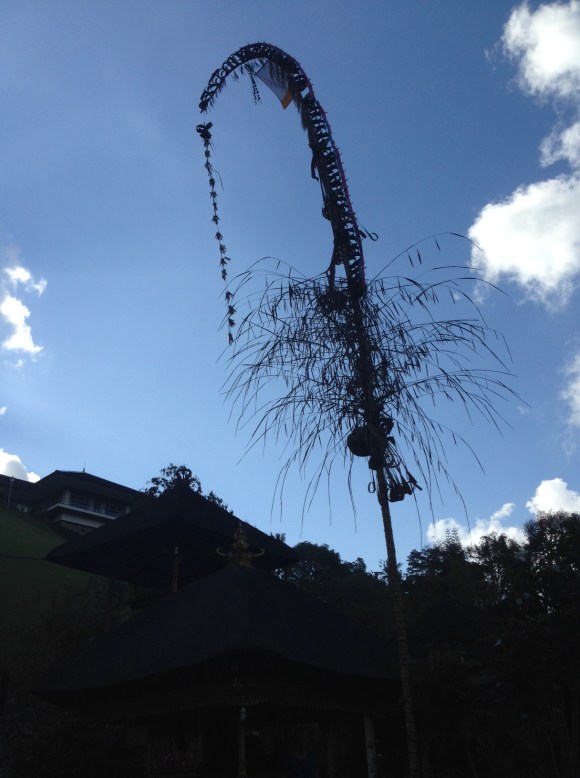
Photos © RocketNews24 unless otherwise noted

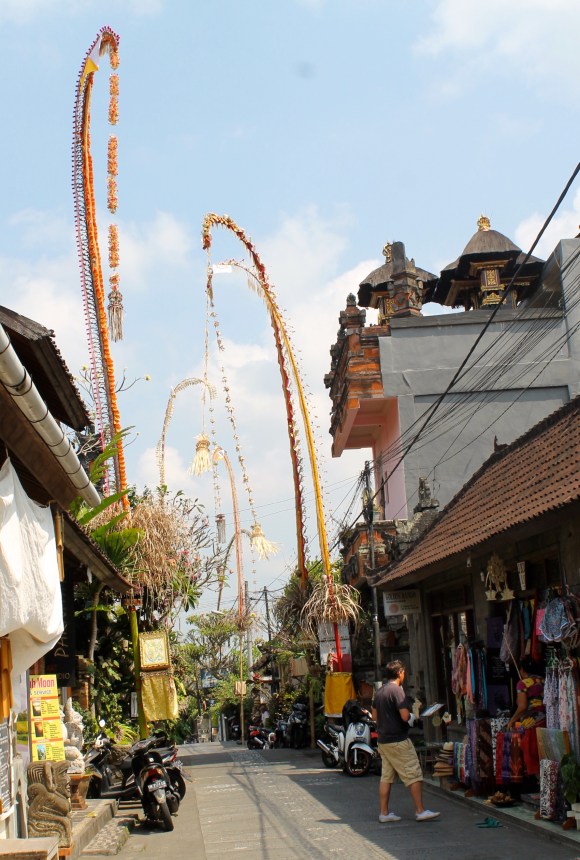

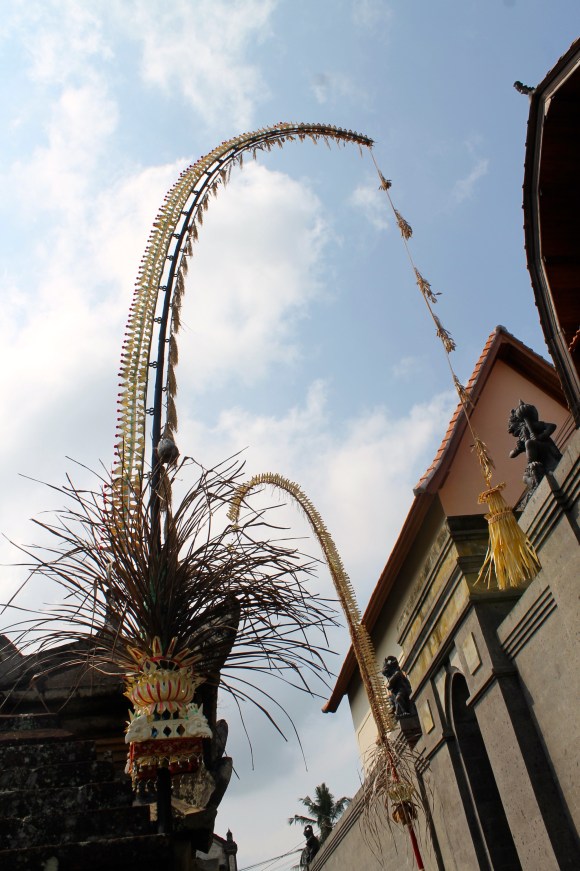
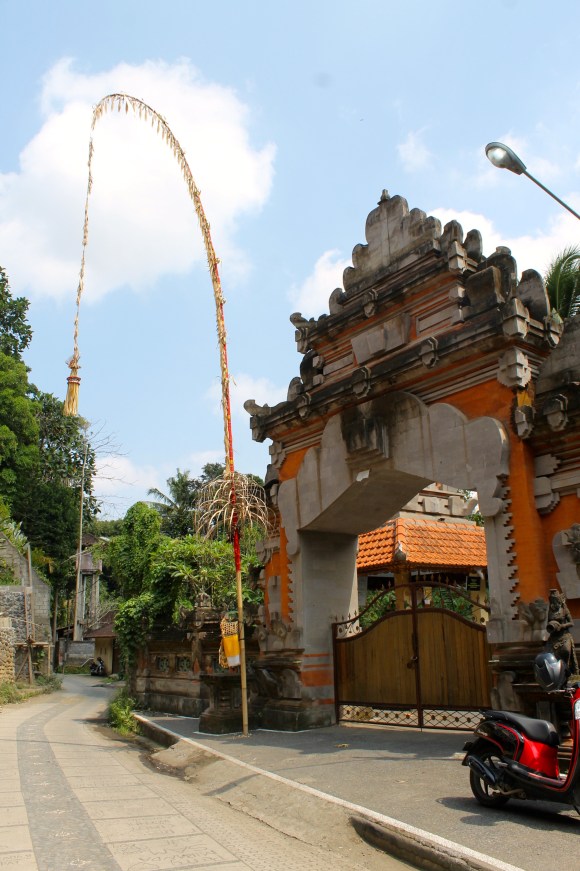
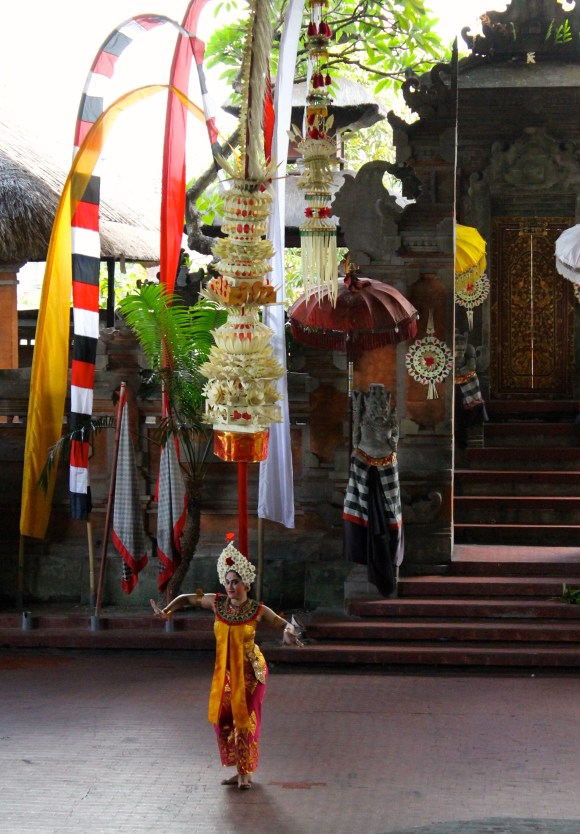
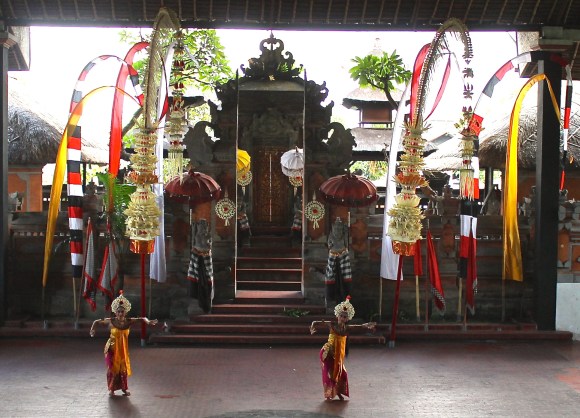
 ‘Cows can marry’ and other fascinating bovine facts from India
‘Cows can marry’ and other fascinating bovine facts from India Throwing Pokéballs in style: Women show off their awesome Pokémon painted nails【Pics】
Throwing Pokéballs in style: Women show off their awesome Pokémon painted nails【Pics】 There’s more to do than just look at the flowers at Tokyo’s biggest riverside sakura celebration
There’s more to do than just look at the flowers at Tokyo’s biggest riverside sakura celebration Coca-Cola releases five new gorgeous limited-edition bottles in Japan
Coca-Cola releases five new gorgeous limited-edition bottles in Japan Find a red envelope on the ground? Here’s why you should never pick it up
Find a red envelope on the ground? Here’s why you should never pick it up McDonald’s new Happy Meals offer up cute and practical Sanrio lifestyle goods
McDonald’s new Happy Meals offer up cute and practical Sanrio lifestyle goods All-you-can-drink Starbucks and amazing views part of Tokyo’s new 170 meter-high sky lounge
All-you-can-drink Starbucks and amazing views part of Tokyo’s new 170 meter-high sky lounge Studio Ghibli glasses cases let anime characters keep an eye on your spectacles
Studio Ghibli glasses cases let anime characters keep an eye on your spectacles Studio Ghibli releases new action figures featuring Nausicaä of the Valley of the Wind characters
Studio Ghibli releases new action figures featuring Nausicaä of the Valley of the Wind characters McDonald’s Japan releases a pancake pie for new retro kissaten coffeeshop series
McDonald’s Japan releases a pancake pie for new retro kissaten coffeeshop series Super Nintendo World expansion gets delayed for several months at Universal Studios Japan
Super Nintendo World expansion gets delayed for several months at Universal Studios Japan Daiso opens massive new 25,392-square foot Tokyo flagship store with its two sub-brands included
Daiso opens massive new 25,392-square foot Tokyo flagship store with its two sub-brands included Beautiful Sailor Moon manhole cover coasters being given out for free by Tokyo tourist center
Beautiful Sailor Moon manhole cover coasters being given out for free by Tokyo tourist center Enjoy Kyoto (Part 3) — The ultimate breakfast? Try $45 rice porridge at a 400-year-old restaurant
Enjoy Kyoto (Part 3) — The ultimate breakfast? Try $45 rice porridge at a 400-year-old restaurant The madness ends now: How to conqueror impossible-to-open Japanese convenience store snacks
The madness ends now: How to conqueror impossible-to-open Japanese convenience store snacks More foreign tourists than ever before in history visited Japan last month
More foreign tourists than ever before in history visited Japan last month Disney princesses get official manga makeovers for Manga Princess Cafe opening in Tokyo
Disney princesses get official manga makeovers for Manga Princess Cafe opening in Tokyo Starbucks reopens at Shibuya Scramble Crossing with new look and design concept
Starbucks reopens at Shibuya Scramble Crossing with new look and design concept Beautiful new Final Fantasy T-shirt collection on the way from Uniqlo【Photos】
Beautiful new Final Fantasy T-shirt collection on the way from Uniqlo【Photos】 Is the new Shinkansen Train Desk ticket worth it?
Is the new Shinkansen Train Desk ticket worth it? Foreign English teachers in Japan pick their favorite Japanese-language phrases【Survey】
Foreign English teachers in Japan pick their favorite Japanese-language phrases【Survey】 Studio Ghibli releases Kiki’s Delivery Service chocolate cake pouches in Japan
Studio Ghibli releases Kiki’s Delivery Service chocolate cake pouches in Japan Japan’s bone-breaking and record-breaking roller coaster is permanently shutting down
Japan’s bone-breaking and record-breaking roller coaster is permanently shutting down New definition of “Japanese whiskey” goes into effect to prevent fakes from fooling overseas buyers
New definition of “Japanese whiskey” goes into effect to prevent fakes from fooling overseas buyers Our Japanese reporter visits Costco in the U.S., finds super American and very Japanese things
Our Japanese reporter visits Costco in the U.S., finds super American and very Japanese things Studio Ghibli unveils Mother’s Day gift set that captures the love in My Neighbour Totoro
Studio Ghibli unveils Mother’s Day gift set that captures the love in My Neighbour Totoro Domino’s Japan now sells…pizza ears?
Domino’s Japan now sells…pizza ears? New Japanese KitKat flavour stars Sanrio characters, including Hello Kitty
New Japanese KitKat flavour stars Sanrio characters, including Hello Kitty One of Tokyo’s most famous meeting-spot landmarks is closing for good
One of Tokyo’s most famous meeting-spot landmarks is closing for good Kyoto creates new for-tourist buses to address overtourism with higher prices, faster rides
Kyoto creates new for-tourist buses to address overtourism with higher prices, faster rides Sales of Japan’s most convenient train ticket/shopping payment cards suspended indefinitely
Sales of Japan’s most convenient train ticket/shopping payment cards suspended indefinitely Sold-out Studio Ghibli desktop humidifiers are back so Totoro can help you through the dry season
Sold-out Studio Ghibli desktop humidifiers are back so Totoro can help you through the dry season Japanese government to make first change to romanization spelling rules since the 1950s
Japanese government to make first change to romanization spelling rules since the 1950s Ghibli founders Toshio Suzuki and Hayao Miyazaki contribute to Japanese whisky Totoro label design
Ghibli founders Toshio Suzuki and Hayao Miyazaki contribute to Japanese whisky Totoro label design Doraemon found buried at sea as scene from 1993 anime becomes real life【Photos】
Doraemon found buried at sea as scene from 1993 anime becomes real life【Photos】 Tokyo’s most famous Starbucks is closed
Tokyo’s most famous Starbucks is closed One Piece characters’ nationalities revealed, but fans have mixed opinions
One Piece characters’ nationalities revealed, but fans have mixed opinions We asked a Uniqlo employee what four things we should buy and their suggestions didn’t disappoint
We asked a Uniqlo employee what four things we should buy and their suggestions didn’t disappoint Princesses, fruits, and blacksmiths: Study reveals the 30 most unusual family names in Japan
Princesses, fruits, and blacksmiths: Study reveals the 30 most unusual family names in Japan Disney’s Japanese New Year’s plushies and figures are ready to make oshogatsu cuter than ever
Disney’s Japanese New Year’s plushies and figures are ready to make oshogatsu cuter than ever Latest design for gorgeous stylized Japanese Coca-Cola cans spotlights Tohoku festivals
Latest design for gorgeous stylized Japanese Coca-Cola cans spotlights Tohoku festivals Wait, the Japanese word daijoubu can mean both “yes” and “no?” Why? HOW?!?
Wait, the Japanese word daijoubu can mean both “yes” and “no?” Why? HOW?!? Chinese zodiac Evangelion characters are here to wish you a happy, chibi Year of the Ox【Pics】
Chinese zodiac Evangelion characters are here to wish you a happy, chibi Year of the Ox【Pics】 Visiting Asagaya Tanabata Festival, known for its spectacular displays that never fail to surprise
Visiting Asagaya Tanabata Festival, known for its spectacular displays that never fail to surprise Star Wars cafe to open in Tokyo as part of city’s real-life Star Wars Holiday special events
Star Wars cafe to open in Tokyo as part of city’s real-life Star Wars Holiday special events Miyako-jima’s Paantu Festival: Traumatizing small children to bring them good luck
Miyako-jima’s Paantu Festival: Traumatizing small children to bring them good luck Tokyo Disney Resort to build new Toy Story Hotel, new themed areas of Disneyland and Disney Sea
Tokyo Disney Resort to build new Toy Story Hotel, new themed areas of Disneyland and Disney Sea Japan Airlines staff reassigned to work as shrine maidens during coronavirus travel downturn
Japan Airlines staff reassigned to work as shrine maidens during coronavirus travel downturn Coca-Cola Japan unveils special New Year’s kimono bottle for 2019 with hidden boar on the packaging
Coca-Cola Japan unveils special New Year’s kimono bottle for 2019 with hidden boar on the packaging Get your sugar fix with a giant Pon de Ring doughnut from Mister Donut this Holiday Season!
Get your sugar fix with a giant Pon de Ring doughnut from Mister Donut this Holiday Season! Starbucks unveils second new festive Christmas drinkware range for 2020
Starbucks unveils second new festive Christmas drinkware range for 2020 Wish you could check out Tokyo’s Christmas illuminations? Well now you can! 【Video】
Wish you could check out Tokyo’s Christmas illuminations? Well now you can! 【Video】 Giant temple in mountains of Japan is also one of its most impressive tapioca bubble tea cafes
Giant temple in mountains of Japan is also one of its most impressive tapioca bubble tea cafes Japan’s newest holiday “Mountain Day” gets approval from Lower House
Japan’s newest holiday “Mountain Day” gets approval from Lower House
Leave a Reply